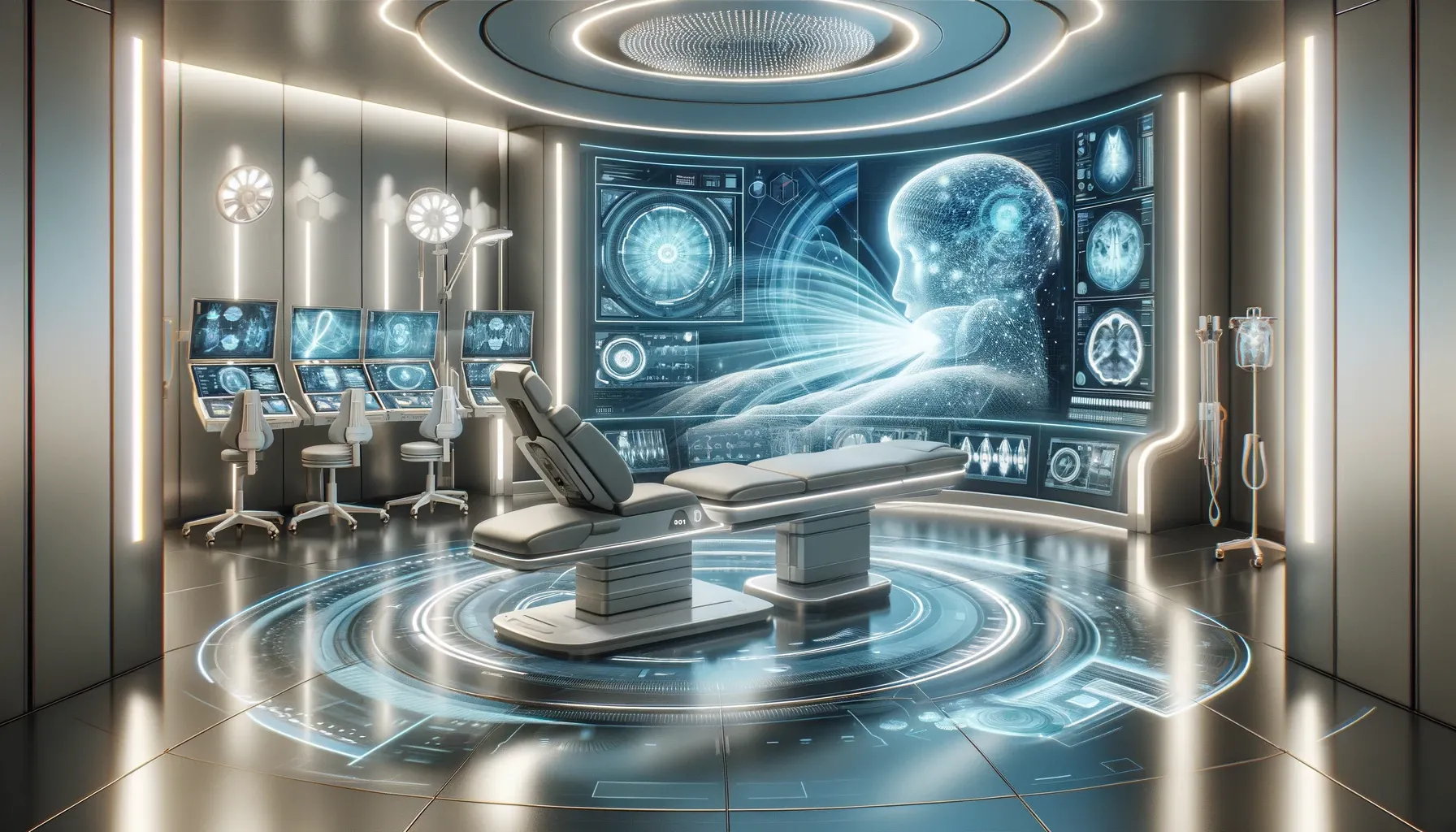Introduction:
In the current era, where sustainability is intertwined with innovation, luminous design in solar energy systems gains special prominence. This is not just a functional issue, but also how these systems interact and integrate aesthetically with the space around them, creating harmonious and visually pleasing environments. The importance of this design goes beyond mere appearance, directly impacting the perception and acceptance of these sustainable technologies by the public.
The objective of this article is to light the way for those looking to incorporate solar energy into their projects, offering valuable tips to ensure a harmonious and efficient integration in the design of different spaces. Whether you are a renewable energy enthusiast, a professional in the field or someone simply looking for inspiration for a greener and more innovative project, we invite you to explore with us the multiple facets of lighting design applied to solar energy systems.
Let's discover together how aesthetics and functionality can go hand in hand, covering everything from the selection of materials and colors to the incorporation of sustainable technologies and practices. Throughout this article, we will offer insights and recommendations so that the implementation of solar energy not only meets energy needs, but also contributes to the creation of visually inspiring and ecologically responsible environments.
Get ready to dive into a world where sunlight is the protagonist, bringing with it endless possibilities for innovation and beauty in design, and discover how you can contribute to a brighter and more sustainable future through the intelligent integration of solar energy systems.
The Importance of Light Design in Solar Energy Systems
When we talk about solar energy, it is common to direct our attention to aspects such as efficiency, sustainability and resource savings. However, there is one vital component that can often be underestimated: lighting design. But what exactly does this term mean?
Definition of Luminous Design
Lighting design refers to the art and science of distributing light, natural and artificial, in a way that harmonizes with the environment, enhances the architecture and meets the visual and emotional needs of the space's occupants. In solar energy systems, this involves not only the strategic arrangement of solar panels, but also the way in which light is captured, distributed and perceived, creating a pleasant and balanced atmosphere.
Impact of Aesthetics on Perception and Acceptance
Aesthetics play a crucial role in how we perceive and accept solar energy systems. An attractive, well-integrated design not only increases visual appeal, but can also positively influence public perception, promoting acceptance and adoption of this form of renewable energy. On the other hand, a poorly designed system can generate resistance and rejection, regardless of its energy efficiency.
Benefits of Good Lighting Design
Investing in an effective lighting design brings a series of benefits. Firstly, it enhances the property and the environment, making it more inviting and pleasant. Furthermore, it contributes to the well-being and visual comfort of users, who enjoy well-lit and harmonious spaces. On a broader level, well-executed design favors the integration of solar technology into the urban fabric, helping to shape more sustainable and visually appealing cities.
Finally, well-thought-out lighting design can maximize the efficiency of solar energy systems by optimizing light capture and minimizing visual impact, which is critical to the acceptability and long-term success of this energy solution.
In short, luminous design in solar energy systems is a key element that intertwines beauty, functionality and acceptance. It acts as a catalyst for the harmonious integration of solar energy into our lives, paving the way for a brighter and more sustainable future.
Harmonization with the Environment
Harmonizing solar energy systems with the surrounding environment is a vital step towards the acceptance and aesthetic appreciation of these installations. With careful consideration of aspects such as location, architecture and landscaping, it is possible to create a visual balance that highlights both the technology and the space in which it is located. Let's explore how these elements can be integrated harmoniously and effectively.
Choosing the Ideal Location for Solar Panels
Selecting the ideal location for installing solar panels is the first step to ensuring effective harmonization with the environment. This choice must take into account not only solar exposure, but also the visual impact on the space and the neighborhood. The objective is to find a point that maximizes energy efficiency, minimizing possible visual distractions and respecting the architectural and natural context of the site.
Integration with Existing Architecture
The integration of solar systems with existing architecture is an art that demands sensitivity and creativity. The design of the panels must complement the lines, shapes and materials of the building, creating visual continuity and avoiding abrupt contrasts. Custom solutions, such as colored or textured panels, can be explored to align with the architectural style and color palette of the room, providing a cohesive and attractive aesthetic.
Using Landscaping to Complement Design
Landscaping plays a fundamental role in harmonizing the lighting design with the environment. Vegetation can be used to frame the solar panels, soften their lines and integrate them organically into the surroundings. Trees, shrubs and flowers not only add beauty and color to the setting, but can also provide controlled shading, contributing to the thermal comfort of the space. Landscaping, when well planned, enhances the positive aesthetic impact of solar energy systems, promoting a symbiosis between technology and nature.
In conclusion, harmonizing with the environment is an essential strategy for the success of lighting design in solar energy systems. Through the right choice of location, respectful integration with architecture and intelligent use of landscaping, it is possible to transform solar panels into valued elements, which contribute to the beauty and sustainability of the space, encouraging a harmonious and inspiring coexistence between man and the environment.
Material and Color
The right choice of materials and colors is an essential component for the success of lighting design in solar energy systems. These elements not only influence the overall appearance of the system, but also how it interacts and integrates with the surrounding environment. Let's look at how careful material and color selection can complement and enhance the aesthetics of your solar project.
Selection of Materials that Complement the Environment
The selection of materials for solar panels and their support structures must take into account the architectural and environmental context in which they will be inserted. Materials that harmoniously complement or contrast with those existing on site can help integrate the solar system into the overall design of the space. The durability and sustainability of the chosen materials are also key factors, ensuring that the system is not only aesthetically pleasing, but also long-lasting and ecologically responsible.
The Importance of Color in Luminous Design
Color is a powerful element in lighting design, with the ability to influence perception, mood and acceptance of the solar system. Well-chosen colors can make solar panels stand out as architectural features or help them blend discreetly into the background. The decision between going for a bolder or more subtle look will depend on the context and the aesthetic and functional objectives of the project.
Tips for Choosing the Ideal Color for Your Solar System
When choosing the ideal color for your solar system, consider the surroundings and the predominant color palette in the room. Neutral colors like gray, black and white tend to be versatile and can easily integrate with different architectural styles. However, don't rule out the possibility of exploring more vibrant colors or textured finishes to create interesting visual effects.
Also note the lighting conditions and how different colors may react to sunlight throughout the day. Some colors can help reflect heat and contribute to energy efficiency, while others can create plays of light and shadow, adding dynamism to the space.
Conclusion, the judicious choice of materials and colors is a fundamental step towards creating a bright design of solar energy systems that is harmonious and attractive. Through careful consideration of these elements, it is possible to enhance the beauty and functionality of solar panels, promoting their aesthetic integration into the environment and contributing to an enriching visual experience.
Lighting and Shading
The interaction between light and shadow plays a crucial role in defining the aesthetics and efficiency of solar energy systems. Well-planned lighting can enhance the design of the solar system, while proper shading management is vital to avoid reducing its efficiency. Let's explore the importance of both and how to achieve a balance that enhances your project.
The Importance of Proper Lighting
Lighting is one of the most powerful tools in the field of design. Proper lighting not only highlights the architectural features of the solar panels, but also creates a pleasant and inviting atmosphere in the surrounding space. The play between light and shadow can bring dynamism and depth to the environment, revealing details and textures and contributing to the overall visual experience.
Avoiding Shading That Affects the Efficiency of Solar Panels
Shading is an inherent challenge when installing solar systems, as it can significantly impact the efficiency of the panels. It is essential to identify and minimize potential sources of shading, such as trees, nearby buildings or structural elements. Careful analysis of the solar path and strategic arrangement of panels can help optimize light exposure and reduce the risk of unwanted shading.
Lighting Tips That Enhance Solar System Design
To enhance the design of your solar system, consider using strategic artificial lighting during hours of lower natural light. Directional lighting, such as adjustable spots and fixtures, can highlight panels and create interesting light and shadow effects. Choosing light tones that complement the color and material of the panels can also influence the visual perception of the system.
Additionally, it is interesting to explore indirect and reflective lighting solutions to soften shadows and highlight the outline of the solar panels, creating a more three-dimensional and attractive look. The integration of smart, controllable lighting solutions allows you to adjust the intensity and direction of light as needed, adapting to different lighting conditions and aesthetic preferences.
In conclusion, the harmonious management of lighting and shading is fundamental to the aesthetic and functional success of solar energy systems. Through creative lighting strategies and shadow mitigation, it is possible to enhance the visual character of the solar panels and ensure their efficiency, contributing to a balanced and inspiring lighting design.
Innovation in Solar Energy Design
As solar energy technology advances, so does the field of design, bringing innovations and trends that aim to not only improve the efficiency of solar systems but also enhance their aesthetics. Design innovation is crucial to the widespread acceptance and adoption of this form of sustainable energy, as it allows for the harmonious integration of solar panels into diverse environments and architectural contexts. Let's explore some of the trends, innovative projects, and how innovation is shaping the future of solar energy design.
Solar Panel Design: Trends and Innovations
The design of solar panels has evolved beyond traditional blue or black panels. One of the emerging trends is customization, which allows panels to be adapted to the user's aesthetic preferences and the architecture of the location. Bifacial solar panels, which capture sunlight from both sides, are another innovation that increases efficiency and offers new design possibilities.
Furthermore, architectural integration such as solar roofs and photovoltaic facades are becoming increasingly popular. These solutions allow solar panels to blend into the building's design, serving both as a constructive element and as an energy generator.
Examples of Innovative Projects
Several projects around the world exemplify innovation in solar energy design. A notable example is SolarLeaf in Hamburg, Germany, which uses bio-reactive solar panels to generate energy while also cultivating microalgae for biofuels. Another innovative project is The Edge, in Amsterdam, considered one of the greenest buildings in the world, with a design that incorporates solar panels on the facade and roof, maximizing energy production.
How Innovation Can Improve the Aesthetics and Efficiency of the Solar System
Design innovation has the potential to transform the way we perceive and interact with solar energy. By making solar panels more aesthetically pleasing and integrated into architecture, aesthetic resistance to adopting this technology can be significantly reduced. Additionally, innovations in photovoltaic materials and technologies continue to improve the efficiency and versatility of solar panels, enabling their application in a variety of contexts and surfaces, from transparent windows to solar pavements.
In conclusion, the future of solar energy design is promising and exciting, with continuous innovations that seek to harmonize aesthetics and functionality. These advances are fundamental to the spread and acceptance of solar energy, as they transform solar panels into valued and versatile design elements, capable of adapting to and enhancing diverse environments and architectural styles.
Personalization and Creativity
When incorporating solar energy systems into a property, there is no need to settle for generic solutions. The field of solar design offers countless opportunities for customization and creativity, allowing each project to stand out and reflect the individuality of the homeowner or environment. Let's explore some tips for customizing your solar system design, using creativity to create unique solutions, and highlighting examples of projects that have managed to achieve this balance.
Tips for Customizing Your Solar System Design
- Architectural Integration:
- Work with architects and designers to integrate solar panels into building design, whether through photovoltaic facades or solar roofs.
- Decorative Elements:
- Consider adding decorative elements around or on top of the panels, such as lattices or mural art, to incorporate an artistic touch.
- Vertical Gardens:
- Explore the possibility of combining solar panels with vertical gardens for a greener, more sustainable look.
- Color and Texture:
- Choose colors and textures that complement the room and add an interesting visual element to the solar panels.
Using Creativity to Create Unique Solutions
Creativity is a key element in transforming a standard solar project into something truly unique and innovative. Think outside the box and explore different shapes, arrangements and combinations of materials. Collaborate with creative professionals and be open to trying new ideas, even if they seem bold at first glance. The objective is to find solutions that align functionality, aesthetics and identity.
Examples of Custom and Creative Projects
An inspiring example of personalization and creativity is the “Dragonfly Bridge” in Singapore. This innovative project integrates solar panels into a bridge structure, imitating the wings of a dragonfly, and serves as both a work of art and a source of energy.
Another example is the “Solar Tunnel” in Belgium, which uses solar panels on the roof of a railway tunnel, demonstrating how existing infrastructure can be optimized to generate renewable energy without compromising aesthetics.
In conclusion, customization and creativity are powerful tools in creating aesthetically pleasing and unique solar power systems. With an innovative approach and attention to detail, it is possible to transform solar system design into an artistic and functional expression, which enriches the environment and inspires the adoption of sustainable energy solutions.
Sustainability and Environmental Responsibility
In an era of increasing environmental consciousness, sustainability is a fundamental principle in design, and the solar energy sector is at the forefront of this transformation. Sustainable lighting design not only contributes to reducing the carbon footprint, but also represents a tangible manifestation of environmental responsibility. In this section, we will discuss the importance of sustainability in lighting design, offer tips for eco-friendly design, and highlight projects that exemplify sustainable and responsible practices.
The Importance of Sustainability in Luminous Design
Sustainable lighting design goes beyond simply incorporating solar panels. It involves creating integrated systems that optimize the use of resources, minimize environmental impact and promote human well-being. Sustainability in lighting design means considering the complete life cycle of products, from material selection to energy efficiency and the possibility of recycling or reuse.
Tips for Eco-Friendly Design
- Material Selection:
- Choose sustainable, recyclable or low environmental impact materials for both the solar panels and associated design elements.
- Energy Efficiency:
- Prioritize low-consumption lighting solutions and technologies that optimize the generation and use of solar energy.
- Biodiversity and Landscaping:
- Integrate vegetation and natural elements into the design, promoting biodiversity and creating habitats for local fauna.
- Water Management System:
- Consider implementing rainwater collection and reuse systems to maximize project sustainability.
Examples of Sustainable and Responsible Projects
An emblematic example of a sustainable project is the “Bosco Verticale” in Milan, Italy. This set of residential buildings incorporates thousands of trees and plants on their balconies, in addition to using solar energy systems, demonstrating a commitment to urban biodiversity and sustainability.
Another notable project is “Crystal Clear” in Oslo, Norway, an office tower that combines photovoltaic facades with recycled materials and energy efficiency solutions, setting new standards in eco-friendly design.
In short, sustainability and environmental responsibility are crucial aspects of contemporary lighting design. By adopting eco-friendly practices and materials, it is possible to create projects that not only stand out for their aesthetics, but also for their positive contribution to the environment and society.
Maintenance and Durability
When investing in a solar energy system, it is essential to consider not only aesthetics and efficiency, but also durability and ease of maintenance. Design significantly influences these aspects, determining the long-term performance of the system and the preservation of its beauty and functionality. In this section, we will cover how design can impact solar system maintenance and durability, offer tips for ensuring a durable and maintainable system, and discuss considerations for longevity and aesthetics.
How Design Influences System Maintenance and Durability
The design of a solar system must consider environmental conditions, the choice of materials and integration with the existing structure. Improper design can result in dirt build-up, premature wear and reduced efficiency. On the other hand, a well-thought-out design can facilitate access for maintenance, protect components against the elements and ensure the longevity of the system.
Tips for a Durable and Easy-Maintenance Solar System
- Easy Access:
- Design the system so that solar panels are easily accessible, simplifying regular inspections and maintenance.
- Resistant Materials:
- Select materials that are durable and resistant to corrosion and UV rays to prevent wear and tear over time.
- Weather Protection:
- Consider the location and angle of the panels to prevent accumulation of snow, leaves or debris, and to ensure adequate rainwater drainage.
- Regular Monitoring:
- Implement monitoring systems to quickly detect and resolve any performance issues.
Longevity and Aesthetic Considerations
Preserving the aesthetics of a solar system over time is as important as ensuring its durability. A well-maintained system not only functions efficiently but also retains its pleasing appearance. Therefore, when planning the design, it is essential to balance beauty and practicality, ensuring that the system is both visually appealing and built to last.
Furthermore, regular maintenance is an opportunity to update the system's appearance, whether through adding decorative elements, adjusting the layout or applying new finishes and colors.
In conclusion, maintenance and durability are essential aspects of solar energy system design. Thoughtful design and ongoing care ensure that the system not only remains operating at its maximum potential, but also maintains its beauty and aesthetic value over the years.
Conclusion:
As we navigate this article, we explore the multifaceted nature of lighting design in solar energy systems and uncover several tips for achieving a charming, harmonious aesthetic. From harmonizing with the environment to the careful selection of materials and colors, each element plays a crucial role in creating solar systems that are not only functional but also visually appealing.
We recapitulate the importance of a design that integrates innovation and sustainability, always considering environmental responsibility and seeking eco-friendly solutions. We also highlight the relevance of durability and maintenance, fundamental elements to preserve both the efficiency and beauty of systems over time.
The balance between aesthetics and functionality emerged as a central theme, demonstrating that one does not exclude the other. On the contrary, the combination of beauty and practicality can enhance the acceptance and adoption of solar energy systems, making them a valuable and pleasant complement to the space in which they are located.
Now, armed with these tips and inspiration, we invite you to embrace innovation and creativity in implementing solar energy systems. There is a world of possibilities waiting, where renewable energy and luminous design meet to create sustainable solutions that delight the eye and benefit our planet.
May this article serve as a starting point for your journey into the world of solar design. Explore, experiment and, most of all, have fun shaping the bright, sustainable future we all long to build.
Action:
Now that you're equipped with an arsenal of tips and strategies for aesthetically pleasing and environmentally responsible lighting design in solar energy systems, how about putting these ideas into practice? Every step you take towards the harmonious integration of solar energy contributes to a more sustainable and visually inspiring future.
Don't let the journey stop here! Continue exploring and expanding your knowledge on our website, where a wealth of information, insights and innovations in solar energy await you. Whether you are an enthusiast, a professional in the field or someone looking to make a difference, there is always something new and exciting to learn and discover.
Remember, every project is a blank canvas, an opportunity to innovate and create something truly unique and impactful. We look forward to seeing how you use these tips to shape your own projects and contribute to the evolution of design in solar energy systems.
So, roll up your sleeves, unleash your creativity and join us in building a brighter, greener future! We are always here to learn, grow and celebrate achievements in the wonderful world of solar energy together.
Access https://provexus.com/ for more articles, guides and resources that can further assist and inspire your projects. Let's light the path to a sustainable and aesthetically enriching future together!
References:
Books:
- “Solar Power Design and Development: An Introduction to Rooftop Solar” by John-Ross Sanger.
Specialized Sites:
- Solar Energy Industries Association (SEIA)
- International Renewable Energy Agency (IRENA)
- National Renewable Energy Laboratory (NREL)
Forums and Blogs:
- Green Tech Media
- ArchDaily
Technical Documentation and Standards:
- American National Standards Institute (ANSI)
- International Electrotechnical Commission (IEC)




